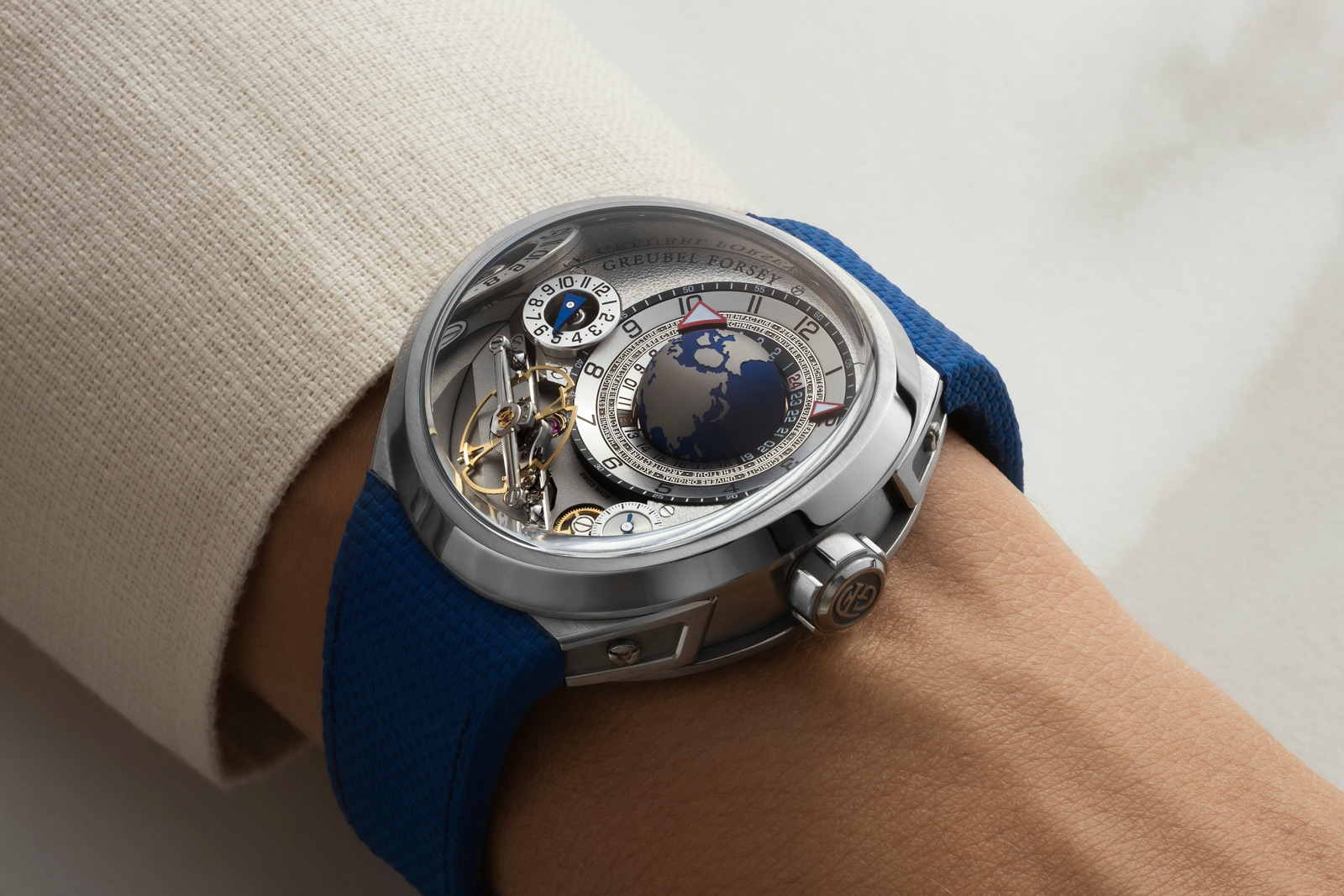Greubel Forsey Introduces the GMT Balancier Convexe
A pure-play Cottier-style world time.
Having made its debut in Greubel Forsey’s watches a decade ago, the world time is one of the brand’s distinctive complications with its large titanium globe. While the original iteration of the world time wristwatch came to an end last year with the all-black final edition, Greubel Forsey has taken the covers off its successor, the GMT Balancier Convexe.
The three-dimensional world time sphere has been retained, but almost all else has been redesigned on the new model. Beside adopting the streamlined aesthetics of the brand’s bestselling sports watches like the Balancier S2, the display now has local and world time arranged concentrically in a traditional, Louis Cottier-style display in a first for the brand.
Initial thoughts
Despite its complex looks and US$400,000 price tag, the GMT Balancier Convexe is relatively simple for a Greubel Forsey. In fact, it’s the brand’s first world time watch without a tourbillon. As a result, the new GMT is as much about design as mechanics.
The GMT demonstrates how GF is implementing its sports watch styling across practically all of its line-up. The GMT has a streamlined “Convexe” case and does away with the asymmetrical bulge traditionally used to accommodate the globe. Because of its curved profile and hidden lugs, Convexe case allows the GMT to pass as a moderately sized watch despite being 46.5 mm in diameter, allowing it to wear smaller.
To go along with the sporty case style, the dial has been given a new look. The central feature is the world-time globe that now sits close to the centre of the dial, resulting in an unconventional look but one that’s more appealing than the asymmetrical execution in past models.
The display has been condensed to hide the irrelevant parts under the dial, revealing just enough for it to look mechanically interesting. Instead of having a sub-dial for the world time, both local and world time indicators have been consolidated into one axis, leaving more space for other elements like the full bridge for the inclined balance. This helps legibility and also means the impeccable finishing can be more easily admired since there are less elements to get in the way of the details.
While the new GMT is at heart a rearrangement of familiar elements, it is powered by a new movement that installs the world time complication on the Balancier calibre. Also notable are the “floating” hour and minute pointers that are perhaps the most logical time display for the Cottier-style world time, since the hands no longer cover the globe.
Telling the time everywhere
While the display on the new GMT been streamlined compared to past models, it is still an exercise to read thanks to the multiple indicators: local time, home time, and world time with an implied day-night indicator.
The local time display is most straightforward: a pair of red arrows for the hours and minutes. At the centre of the time display is the titanium globe that makes one full revolution every day, moving at the same rate as Earth. That means world time can be read by matching a location on the globe to its respective point on the 24-hour scale, but this requires a strong grasp of geography and acceptance of approximate rather than exact time.
More exact is the second time zone display indicated via sub-dial at nine o’clock that moves in sync with the world time display. Though it indicates the time on 12-hour scale, day or night can be inferred from the globe and its position against the 24-hour scale.
A finely finished pusher on the case allows for quick adjustment of the second time zone in one hour steps
The world time on the front is intended for a quick glance, because GF has an extra-large world time display hidden on the back.
It is a sapphire disc with city names along with a larger, outer 24-hour scale that indicates time in each of the 24 primary time zones. And it also features a smaller innermost 24-hour scale for summer time.
And the final detail worth noting is the band: as is standard for the brand’s sports watches, the new GMT is offered with either a rubber strap or matching metal bracelet. The watch costs 10% more with a bracelet, which means the bracelet costs US$45,000.
Key facts and price
Greubel Forsey GMT Balancier Convexe
Diameter: 46.5 mm
Height: 17.4 mm
Material: Titanium
Crystal: Sapphire
Water resistance: 100 m
Movement: GMT Balancier Convexe
Functions: Hours, minutes, seconds, GMT, world time, and day-night indicator
Frequency: 21,600 beats per hour (3 Hz)
Winding: Hand wind
Power reserve: 72 hours
Strap: Rubber strap or titanium bracelet
Limited edition: 66 pieces
Availability: At Greubel Forsey retailers
Price: US$400,000 on rubber strap, US$445,000 on titanium bracelet
For more, visit greubelforsey.com.
Back to top.